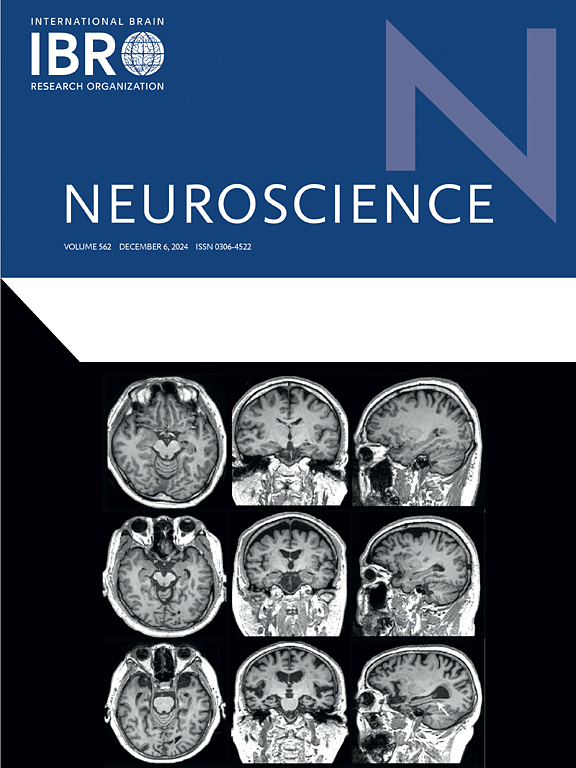Δ133p53α-mediated星形胶质细胞衰老和神经毒性的抑制作为神经退行性疾病的可能治疗方法。
IF 2.8
3区 医学
Q2 NEUROSCIENCES
引用次数: 0
摘要
大脑中的非神经元胶质细胞,如星形胶质细胞,在维持神经元细胞的功能完整性方面起着至关重要的作用。越来越多的证据表明,星形胶质细胞的细胞衰老,其特征是增殖潜力的丧失和神经毒性细胞因子的分泌,在阿尔茨海默病和许多其他神经退行性疾病的神经毒性中起着重要作用。这篇综述讨论了Δ133p53α的有益作用,它是一种天然的p53蛋白异构体,可以抑制p53介导的细胞衰老,从而保护星形胶质细胞免于衰老,强调了它作为治疗靶点的潜力,并强调了在这一领域继续研究的必要性。无论是在经复制衰竭、辐照或暴露于淀粉样蛋白-β诱导的培养的衰老人类星形胶质细胞中,还是在阿尔茨海默病患者衰老星形胶质细胞增加的脑组织中,内源性Δ133p53α蛋白的表达水平均持续且显著降低。慢病毒载体驱动Δ133p53α的表达保护培养的人类星形胶质细胞免于细胞衰老和神经毒性分泌表型,导致其细胞重编程到与神经营养生长因子相关的神经保护状态。因此,我们建议Δ133p53α作为一种值得测试的治疗靶点,可以在广泛的神经退行性疾病中增强衰老星形胶质细胞,包括阿尔茨海默病,肌萎缩侧索硬化症,帕金森病和创伤性脑损伤引起的慢性创伤性脑病。我们假设Δ133p53α-mediated细胞重编程方法和衰老或senolytic方法,都针对非神经元细胞,可能是互补的,并且可能与目前使用的神经元保护或淀粉样蛋白β靶向治疗合作。本文章由计算机程序翻译,如有差异,请以英文原文为准。

Δ133p53α-mediated inhibition of astrocyte senescence and neurotoxicity as a possible therapeutic approach for neurodegenerative diseases
Non-neuronal glial cells in the brain, such as astrocytes, play essential roles in maintaining the functional integrity of neuronal cells. A growing body of evidence suggests that cellular senescence of astrocytes, characterized by loss of proliferative potential and secretion of neurotoxic cytokines, makes significant contribution to neurotoxicity in Alzheimer’s disease and a wide range of other neurodegenerative diseases. This review discusses the beneficial effects of Δ133p53α, a natural p53 protein isoform that inhibits p53-mediated cellular senescence, thereby protecting astrocytes from senescence, highlights its potential as a therapeutic target, and underscores the need for continued research in this area. Both in senescent human astrocytes in culture, whether induced by replicative exhaustion, irradiation or exposure to amyloid-β, and in brain tissues with increased senescent astrocytes from patients with Alzheimer’s disease, the expression levels of endogenous Δ133p53α protein were consistently and significantly reduced. The lentiviral vector-driven expression of Δ133p53α protected cultured human astrocytes from cellular senescence and neurotoxic secretory phenotype, leading to their cellular reprogramming to a neuroprotective state associated with neurotrophic growth factors. We thus propose that Δ133p53α is worth testing as a therapeutic target that can be enhanced in a wide range of neurodegenerative diseases with accumulated senescent astrocytes, including Alzheimer’s disease, amyotrophic lateral sclerosis, Parkinson’s disease, and chronic traumatic encephalopathy due to traumatic brain injury. We hypothesize that a Δ133p53α-mediated cellular reprogramming approach and a senolytic or senomorphic approach, both targeting non-neuronal cells, may be complementary with each other, and may cooperate with neuron-protecting or amyloid-β-targeting therapies currently in use.
求助全文
通过发布文献求助,成功后即可免费获取论文全文。
去求助
来源期刊

Neuroscience
医学-神经科学
CiteScore
6.20
自引率
0.00%
发文量
394
审稿时长
52 days
期刊介绍:
Neuroscience publishes papers describing the results of original research on any aspect of the scientific study of the nervous system. Any paper, however short, will be considered for publication provided that it reports significant, new and carefully confirmed findings with full experimental details.
 求助内容:
求助内容: 应助结果提醒方式:
应助结果提醒方式:


